Here’s the scoop: Ice cream brands are tapping into snacking culture and quick commerce apps to melt our hearts – and wallets.
By Mradula Hegde
Experts:
- Ankit Chona, managing director and founder of Hocco Ice Cream
- Saloni Kukreja, chef and founder of Indu Ice Cream
- Smitha Menon, food journalist and host of Big Food Energy podcast
TL;DR
- With the rise of ‘snacking culture,’ Indians today eat four times more ice cream than they did 10 years ago.
- Quick commerce apps are pouring gasoline on our snacking habits – now, one in 10 ice creams in India are ordered on apps like Zepto, Swiggy and Blinkit.
- Indians love snacking, but they’re doing it differently – 90% are looking for healthier swaps for their usual munchies and some are even willing to pay premiums for high-quality, natural ingredients.
Indians today eat four times more ice cream than they did a decade ago. What’s changed?
For one, snacking culture: it surged during the pandemic, and Gen Z has since continued to reach for small, frequent meals — a trend pushing even ice cream into micro formats like bites. In the UK, Magnum’s bite-sized products have helped “premiumise” the category as those who purchase minis alongside traditional tubs and cones spend 76% more on average.
Closer to home, NOTO, Havmor Ice Cream, Kwality Wall’s, Vadilal and CreamBell have also introduced miniature products on quick commerce apps that are pouring gasoline on snacking culture. In fact, one in 10 ice creams in India are now ordered on platforms like Zepto, BlinkIt and Swiggy Instamart.
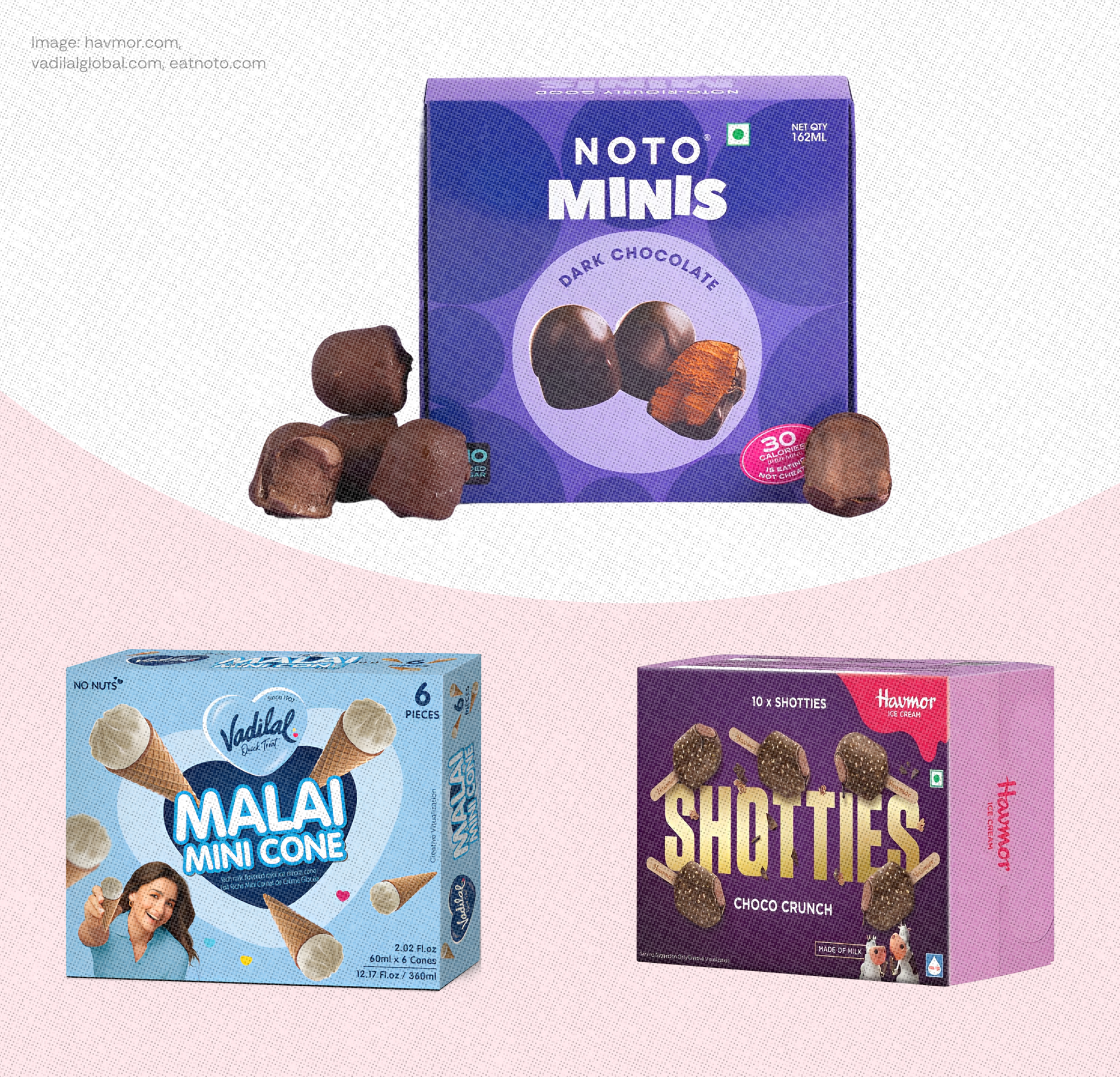
The cherry on top: this consumer hunt for novelty is expanding not only formats but also flavour profiles that are elevating the category overall – a shift driven by millennials who are more likely to experiment with savoury and spicy notes like wasabi, charcoal lychee, and Dubai chocolate.
There are no signs of a slowdown: India’s ice cream market is expected to almost double to ₹90,000 crore ($10 billion) in the next decade and homegrown brands like NOTO, Hocco Ice Cream, Go Zero and Get-A-Way have secured millions of dollars from investment firms.
So what’s the play here? Brands that understand the “dopamine generation” and successfully tap into emotional and cultural cues with bold flavours, unique packaging, limited-edition products, and merchandise.
OCCASIONAL TREAT TO GO-TO SNACK
Ice cream has always been an “emotional support” food, getting you through break ups, root canals, hot summer days, even your period. Market intelligence agency Mintel calls this the “lipstick effect” (also observed in gaming) where people buy small-unit luxury items to cope, especially in times of economic strife.
Now, thanks to temperature-controlled environments like malls, improved cold storage, and stability in the prices of essential ingredients like milk solids, ice cream has become ubiquitous, graduating from an occasional magic bullet to a go-to snack.
“In India, freezers at home had limited capacity. A significant share of the freezer space was reserved for ice, meat, peas, aamras [mango pulp dessert], leaving little room for ice cream,” says Ankit Chona, managing director of Hocco Ice Cream. “Since ice cream has traditionally been an impulse purchase, quick commerce satisfies that whenever the craving strikes.”
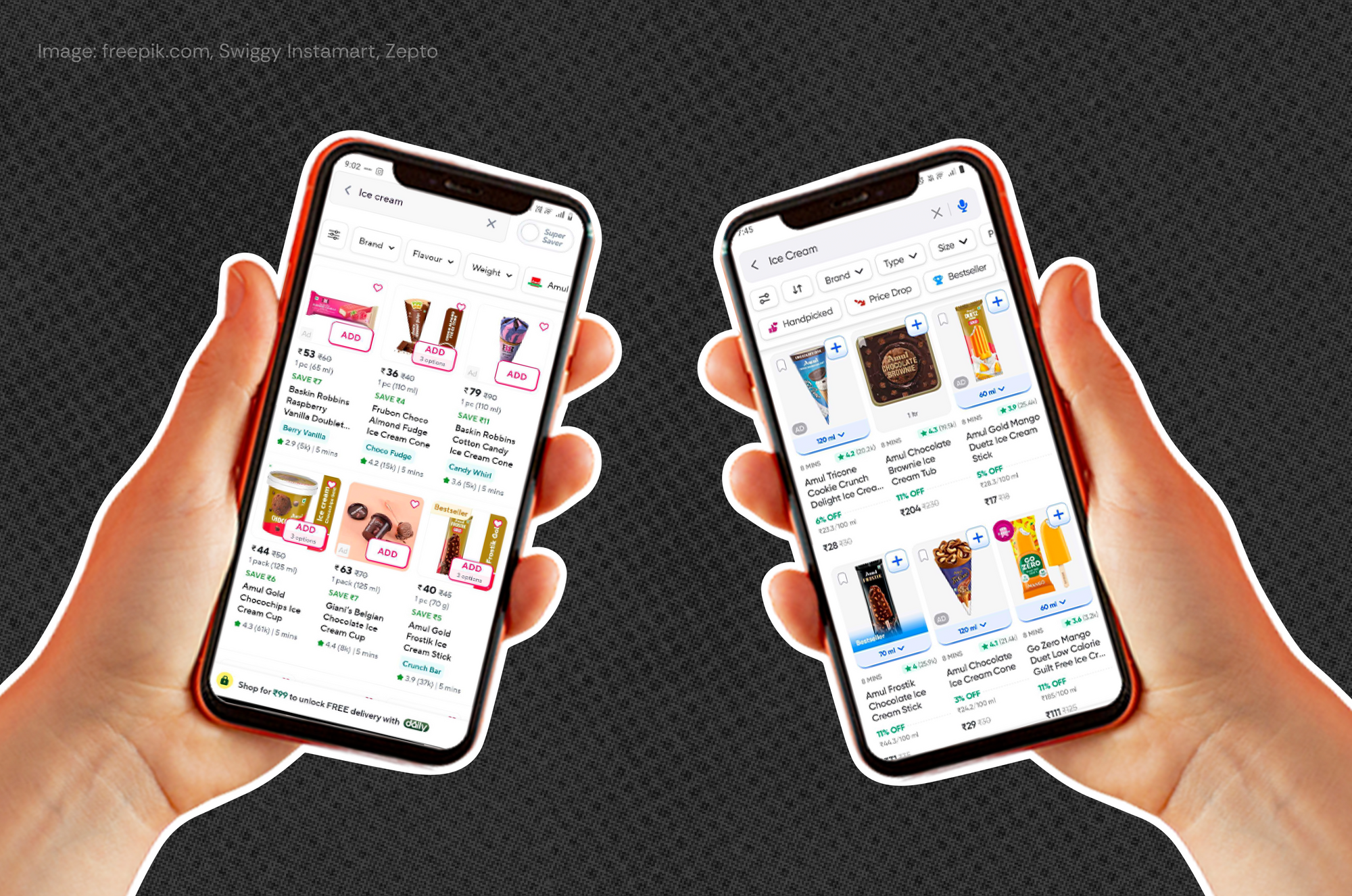
LOW-CAL, VEGAN AND PROTEIN ALTERNATIVES
With late-night cravings just a click away, it’s no wonder physical wellness has become a top priority for Indians. They’re still snacking, just differently – 90% are looking for healthier swaps for their usual munchies and some are even willing to pay premiums for high-quality, natural ingredients.
This shift has fuelled the rise of ‘guilt-free’ alternatives: low-calorie, vegan, high-protein ice cream. New brands like Go Zero and Get-A-Way (featured on Shark Tank India) have replaced sugar and milk solids with plant-based sweeteners like stevia and whey protein isolates. Legacy brands like Mother Diary, Baskin Robbins and Vadilal have ‘healthier’ options too. Even Amul launched a low-calorie ‘Protein Kulfi’ [frozen dairy dessert] and spurred a flurry of memes.
“New-age ice cream brands are experimenting with new formats and dipping into the health-conscious segment,” says Smitha Menon, food journalist and host of Big Food Energy podcast. “This allows them to price it slightly higher, and the consumers don’t mind paying a little extra for cleaner, healthier ingredients.”
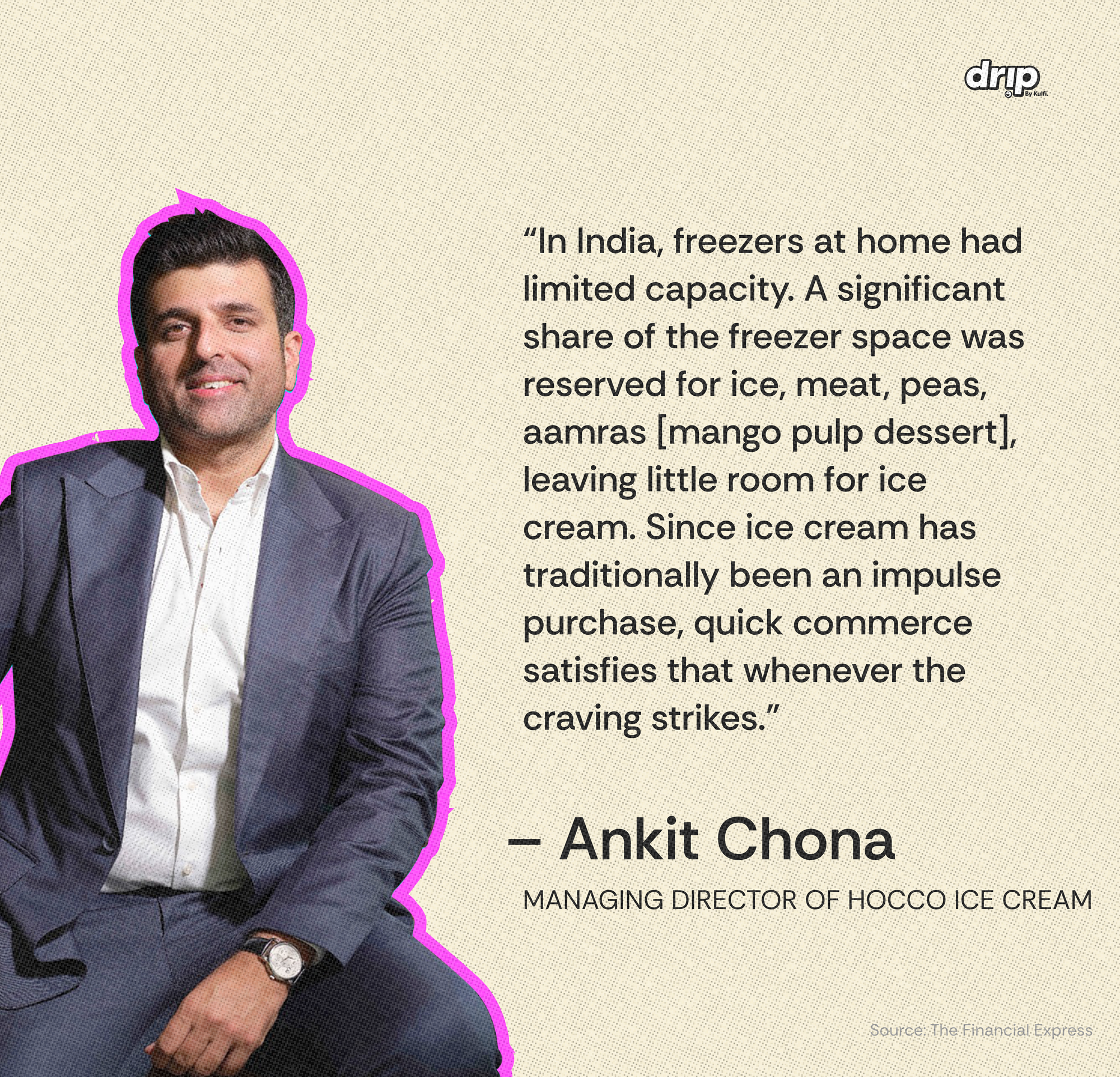
INNOVATE BEYOND TASTE
Experimentation can even extend to packaging and marketing. Hocco Ice Cream’s Aamchi went viral because its mango-shaped, blister pack ice cream looked and felt like a real box of mangoes, further indicating our appetite for novelty. The brand doubled down on the cultural moment with a mango-tree shaped billboard, a mango-scented print ad, and even a rap song. According to Chona, the brand is expecting almost ₹90 crore ($10 million) in sales to come from quick commerce apps and is even tailoring brand strategy to best capture consumers on Zepto, Blinkit and Swiggy Instamart.
Chef Saloni Kukreja’s Indu Ice Cream is also making brand strategy playful. In a cheeky collaboration with Tinder’s “Move On” campaign, the artisanal label launched four limited-edition, heartbreak-inspired flavours like ‘Not Your Match Ya’ and ’Toxic Ex-presso’ — available exclusively on Swiggy and Zomato. For Fenty Skin, Kukreja crafted an exclusive kulfi collection with flavours inspired by the beauty brand’s newly launched lip oils. Even baby product company Frida partnered with OddFellows Ice Cream Co. on a limited-edition breast milk-flavoured pint for U.S. customers.
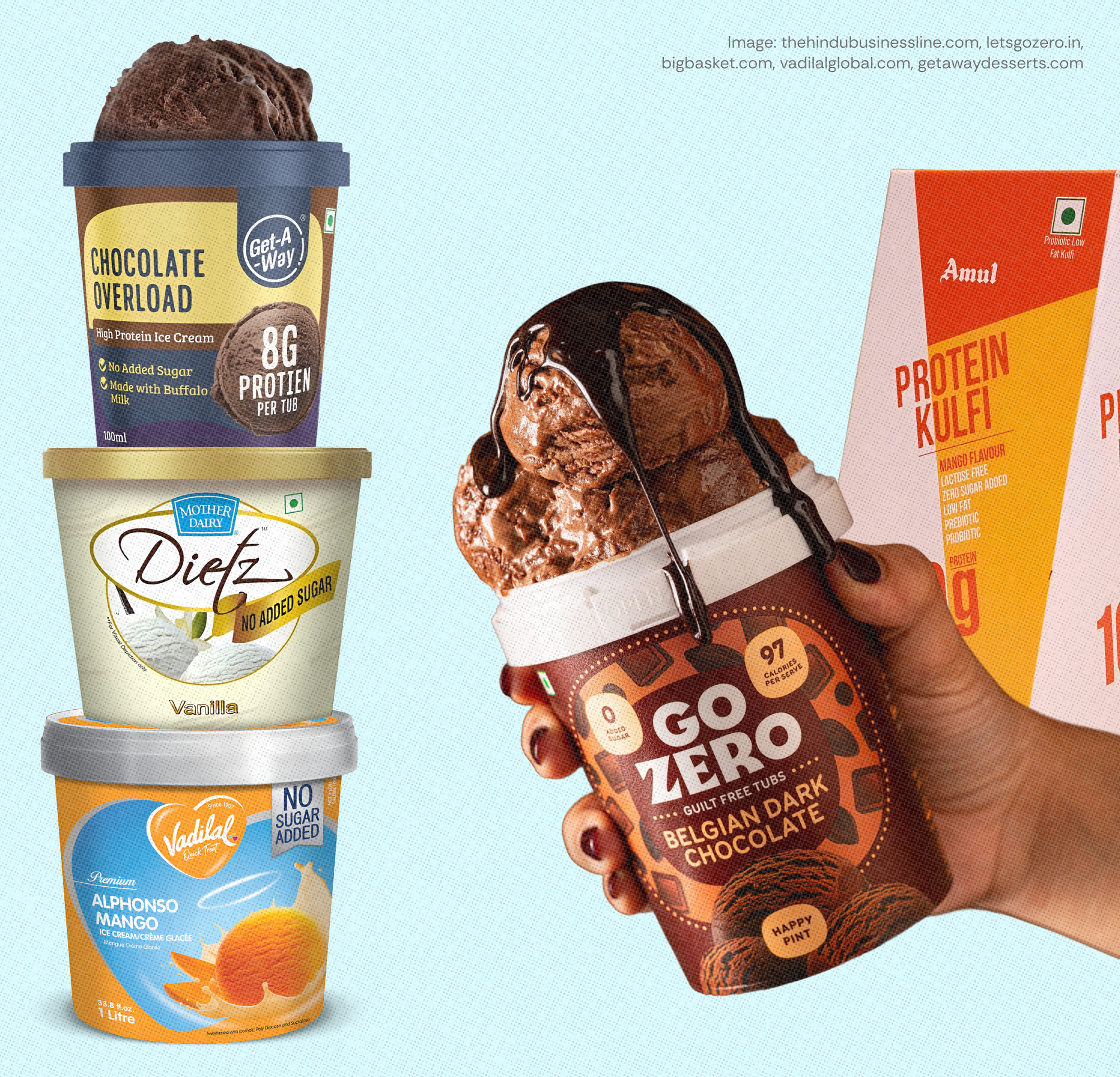
WE ALL SCREAM FOR ICE CREAM - COOL, NOW WHAT?
MAKE INDIAN TASTES A CULTURAL MOMENT
One path forward for the country’s ice cream industry is to reinterpret western tastes and products with local, homegrown ingredients and flavours to appeal to Indians’ unique palettes. Another, more long term strategy is to stop chasing the west, look inward and completely redefine what cold dessert means in India. “Consumers today want a cooler version of mithai [traditional Indian sweets], chocolate, and even ice-cream,” says Chona, whose brand just dropped modak [Indian sweet dumpling] ice cream in time for Ganesh Chaturthi celebrations.
How can cold dessert or ice cream be to India what gelato is to Italy – a dessert so distinct and rooted in our identity and history that it becomes an international cultural export? Could desserts like modak, kulfi and mithai get a modern upgrade with sleek marketing and innovative formats? Or does our culinary future lie in something entirely new yet to be invented?
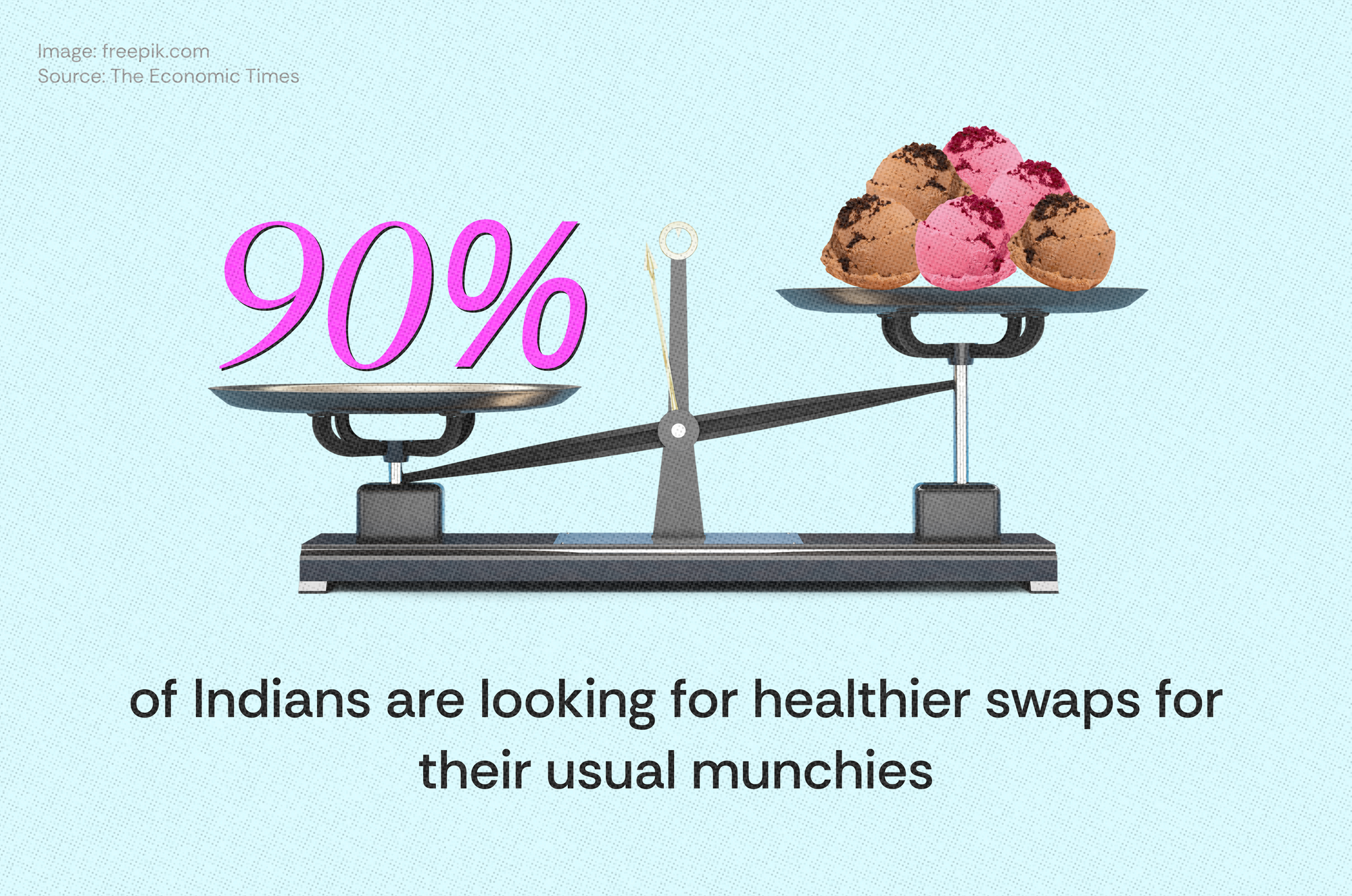
TAKE YOUR CONSUMERS ON AN ADVENTURE
Picture this: a Whey protein-infused, zero sugar, caffeinated scoop that can replace your pre-workout smoothie. “The consumer is adventurous and more open to experimenting with newer flavours and formats,” says Kukreja. So play with unexpected flavours and experiment with how your product can be served, presented and enjoyed. Take One Trick Pony, a peanut butter brand that redesigned its jars to open upside down so customers could avoid the unpleasant experience of mixing and spilling the oil that collects on top. Beyond products, think loyalty programs, celebration bundles or subscription boxes that build rituals and embed your brand into everyday life.
LEAN INTO CROSS-COUNTRY COLLABORATIONS
Like Hocco Ice Cream partnered with spoken word artists, could Nua and Indu Ice Cream team up on an indulgent pint of ice cream that comes as an add-on to your monthly order of pads? Maybe Spotify could surprise you with an ice cream treat if you have one too many break up songs on your Wrapped for the year? For creative marketers, there is boundless potential for collaboration even with brands outside the food space.
India’s ice cream revolution shows no signs of melting away. The next few years will belong to brands that not only understand how the “dopamine generation” functions but also see their products – in this case, ice cream – as a vehicle for a larger Indian identity.
Mradula Hegde is a STEM grad who traded lab coats for copy and campaigns. Bombay-born and Bangalore-based, she heads social media and marketing communications at Goya, leads walking tours, and can map a city through its snacks. With over a decade’s experience, she crafts brand narratives that marry cultural insight with sharp creativity. A mandala-colouring marketing enthusiast with Moo Deng as her spirit animal, she’s forever chasing her next movie or series binge.
